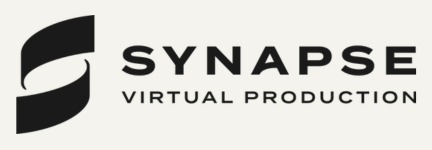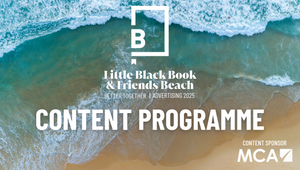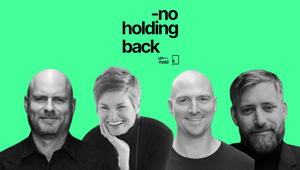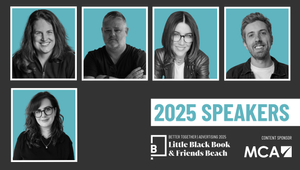
No Holding Back: These CMOs Expect World-Class Work, Refreshed Teams, and Deep Listening
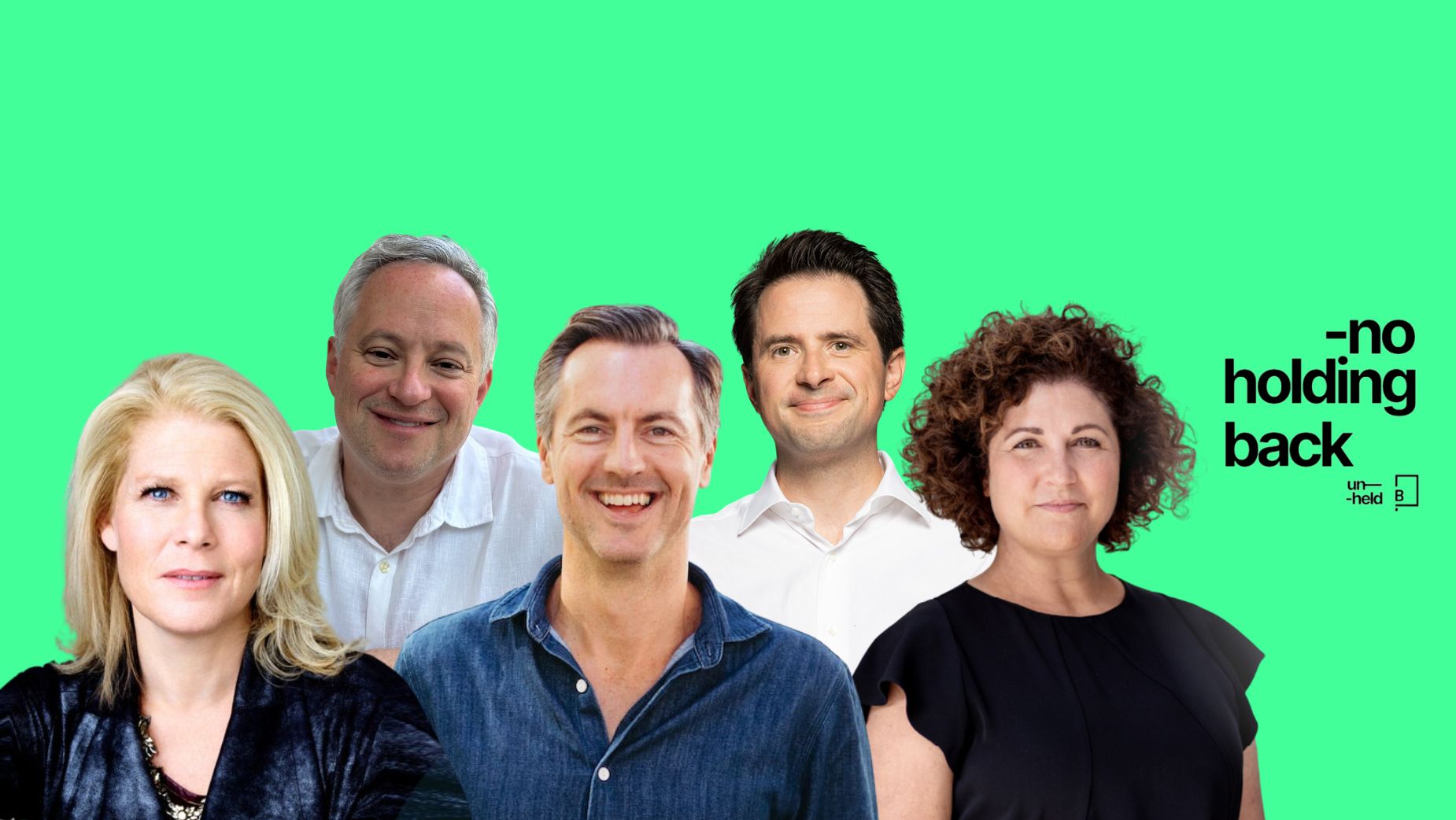
Properly listen. Be easy to buy and understand. Spend more time with the brand’s products and services. Put up an A-grade team. Deliver world class work.
Leading chief marketers across the US and Australia have simple but potent expectations of their agency partners, as they navigate largely shrinking marketing budgets, weigh up their brand versus performance spend, and aim to take bold creative leaps they can sell to their CEOs, CFOs, and boards.
IBM’s senior vice president of marketing and communications, Jonathan Adashek, has exceptionally high standards for his agencies. “Nothing but the best. I mean, it's that simple. I'm looking for agencies to be partners with us, I'm looking for agencies to help us look around the corner, I'm looking for agencies to be proactive.”
But CMOs must create the conditions for success, because agencies “can only be as good as you enable them to be," Jonathan acknowledges.
“If we give the agency garbage on the way out and say go create something with this, they're going to come back to us with garbage,” he says.
“They're not going to come back to us with a Monet. So you've got to be realistic, it is a two way street.”
Linda Boff is the CEO of indie agency Said Differently, but spent over two decades client-side at GE, half of which she served as global chief marketing and communications officer. “I fundamentally believe that old maxim that clients get the work they deserve," she says.
“So I look back on my old client self, and I think that, generally speaking, our team were good, better-than-average clients. We were respectful. We brought folks into the tent.”
When she joined Said Differently last year, she said, “Coming from the CMO role, I know what marketers need to win.” What does it take for agencies to win?
“Be easy to buy and understand. I don't think, for most agencies, it is an advantage to say that you can do everything well,” she says.
“You need to be an exceptionally good listener ... It is so tempting to want to tell a prospective client all the reasons that you're great and they should hire you, and really the only reason they should hire you is if you understand their business and can provide them something they don't have. So listening is something that all of us on the agency side are perhaps in a bit of short supply on.”
If agencies truly listen, they get to the heart of the client’s problem, and create work that primarily builds the client’s brand, not the agency’s.
“It can't be magic for magic's sake,” as Linda explains. “You can add sizzle, as we like to say, to substance, but it's to drive growth or sales or reputation, or opening new markets, or introducing a brand. It can't be because it's fun.”
“Change Staff Frequently to Keep Us Honest”
Andy Morley, the director of marketing across Uber and Uber Eats in APAC, expects “big, impactful, breakthrough work” and “platform-first excellence” for the category-leader, which has established a reputation for fun, consistent, and effective creativity. He puts his agencies, headlined by indie creative shop Special, in a position to succeed by keeping his internal team and agency village lean.
“We run small villages. I don't want a big roster of agencies. I don't want anyone competing. I want everyone to be fully integrated into our team,” he says. “We run very lean internal teams, because we believe in the external specialist skills that agencies can bring.”
The dedicated marketing team across Uber and Uber Eats in Australia is just seven people, plus a few staffers in regional roles.
“It's not like these 100-person teams that you see in other companies. That's a very deliberate choice, because I want every one of these people to be absolute guns that can move really quickly, who all have these big, important jobs, and then they work with specialists that they need to be able to produce great work.
“The more that you bring that internal, the more it creates slow, political challenges moving work through the team. It means that people's jobs get diluted, and so it's harder to have the top talent, because it's hard to give the top talent amazing roles.”
He doesn’t necessarily expect long tenures from agency staffers; in fact, he wants “agencies who change their staff quite frequently to keep us honest and make sure that we're not just producing more noise that's going to get ignored.”
Long-term agency partnerships build candour and shorthand, Jonathan argues. During a recent visit to Sydney, the New-York based IBM marketer says, “There was an issue this morning as I was walking to the office. The CEO of Ogilvy [IBM’s agency for 30+ years] … texted and said, ‘Hey, can you talk? Quick question for you’.
“Had I not had the relationship, it would have been ‘I need to come see you’. I was walking past whatever cruise ship is in the port right now, and before I walked the length of the cruise ship, it was over – she was like, ‘okay, got it, done, boom’. It's got to be a two way relationship.”
“I Wish They Spent More Time With Our Products and Services”
Susan Coghill’s expectations of her agencies haven’t changed over time. As chief marketing officer at Tourism Australia, her agencies are responsible for selling Australia to the world by developing and executing “world class marketing” across 15 key markets.
“What has shifted over time is that, as a client, we are more data-led and have clearly defined effectiveness in destination marketing, which helps inform agency thinking and recommendations,” she says.
Last year, Tourism Australia pitched its creative and digital account. Susan was transparent with pitch contenders about the business’ operating context and needs, and when she appointed Accenture Song, led by Droga5, they spent four weeks in immersion sessions “before we gave them a single brief.”
“We are very transparent with our marketing strategy and annual plans and seek input along the way from our agencies,” she adds, and the business conducts annual agency reviews run through an independent consultant.
Creative and strategic excellence are non-negotiable, but she also needs her agencies to “help us be more effective with every initiative and every dollar.”
Clayton Ruebensaal started his career in agencies across both strategy and client services, before switching to client-side roles and leading the marketing function at AMEX and Ritz Carlton. He has been Comcast’s chief creative officer for 18 months, and unlike Susan, “my expectations change because the market changes.”
“That’s what makes working in marketing so interesting – the channels and tools are constantly evolving, giving us so many new ways to do the same jobs we’ve always had: create awareness, sell products, drive price premium, engender loyalty.
“What’s changed most is that we’ve gone from trying to hire the single best agency to meet all our needs to finding the right partner for a specific job.”
This year, he wants “maximum impact” and to creatively be “more interruptive”. “After a decade of driving optimisation, we need to add breakthrough ideas to the mix. Ideas that leverage media and creative in the same breath to interrupt.”
Measuring success against that goal means connecting the dots between investment and business results – “When we force that way of thinking, we get to better creative outcomes.”
As for what he wishes agencies did more?
“I wish they spent more time with our products and services. I’d love less lengthy preambles to the ideas. And yes, I’m the pot calling the kettle black as a former planner.”
“I Know The Kind of Folks I Look For. They Break a Little Bit of Glass”
When she was chief marketer at GE, Linda cared more about the people working on her account than the agency brand. “To me, an agency is the people that are in the agency, and it makes no difference to me what the name above the door is.”
GE worked with many agencies during her tenure, across holdcos and indies. Its media agency was OMD, until a group of execs left in 2014 to create Giant Spoon, and GE “hurried right along with them.” First and foremost, Linda cared about the people working on her business, and ensuring her agencies created the conditions for them to do their best thinking.
“People like Benjamin Palmer [The Barbarian Group co-founder and ex CEO] and Greg Hahn [Mischief co-founder] can't thrive if they're too throttled. Now, that being said, Greg was on our creative team at BBDO, that's how I know him. So I know that Greg Hahn, and I know the Mischief Greg Hahn, and it's still the same Greg Hahn.
“I know the kind of folks I look for. They break a little bit of glass. They have new ideas. They are going to be bold because you can always pull back, but you can't push something forward if you haven't explored those possibilities.”
Asking For A Collective View “Doesn’t Necessarily Get to the Best Answer”
Uber’s Andy appointed a dedicated agency manager to ensure expectations are a constant conversation. In quarterly reviews, the team asks questions like, ‘Are we taking big enough risks together?’ “It creates the rigour around it to make sure that we're servicing the right issues and operationalising against them.”
He also doesn’t want his village to present a unified answer; instead, he wants them to surface and debate the tensions and trade offs so he can make a more-informed decision.
“I want them to all work really well with each other, but that doesn't mean be subservient to each other and feel like they need to solve all the problems.
“A lot of clients say, 'I want the agency to come back with a collective view'. And the risk on that is it doesn't surface up the issues where there's trade offs that actually we need to be accountable for, because the media view and the creative view will very frequently bring different arguments to the table.
“Should we readjust the media plan to fit the creative idea, or should we rethink the creative idea to meet the media plan? Both of them are right in different circumstances, and it's a trade off that other companies pass off to the agencies to make their life easier, but doesn't necessarily get to the best answer.”
Linda has taken everything she expected as a marketer and applied it to how she services clients as an agency CEO. Part of her job is understanding the power and politics of a client’s organisation.
“Sometimes the person who's on the hook is the client, [sometimes they are] maybe the messenger versus the acolyte within the company,” she notes.
“And I always feel bad when that's the case, because they're trying to guess what their boss or their boss' boss wants, and you always want to give them a squeeze and say, 'Oh, I'm so sorry', because they're not getting at the nub of what the problem is. So to me, it's: give us the real problem, so that we can solve the real problem.”
Said Differently doesn’t have offices so it can invest more in building its 4,000-strong network of creative, strategic, and tech freelancers, and ensure “we can always give them [marketers] the A team”.
“What we try to do, and where we try to not just meet but exceed our clients' expectations, is to assemble a group of people that they couldn't buy at a traditional agency.”
Every client ultimately wants an A-Team, she says, because it gets marketers closest to the thing they care about most of all: “Creative that is driving hard results.”
–
This piece was part of ‘No Holding Back…’ a series championing a changing industry dependent on independence. With no holding group backing them, or holding them back, this series explores the triumphs, opportunities, and challenges for the next generation of indies.
Told through those that work for them, with them, and even against them, it is an unfiltered perspective on the creative businesses at the forefront of our industry.
No Holding Back is brought to you by un-held, the un-holding co. helping indies scale without a sale.
Other pieces in the series include:
Meet the Global Indies Not Held Back By Red Tape or "Profits or Politics"
No Holding Back With Sir John Hegarty: Ask Marketers in Pitches Whether They’ll “Bugger Off”






